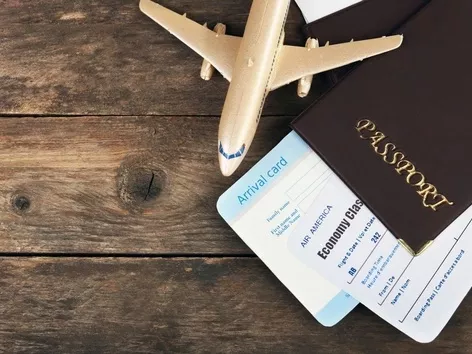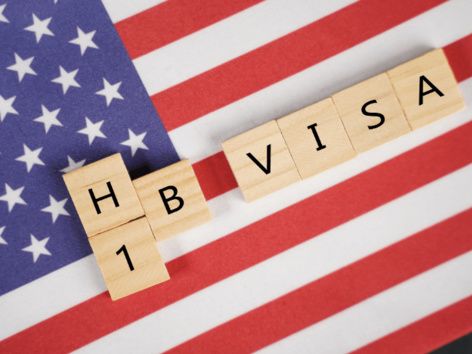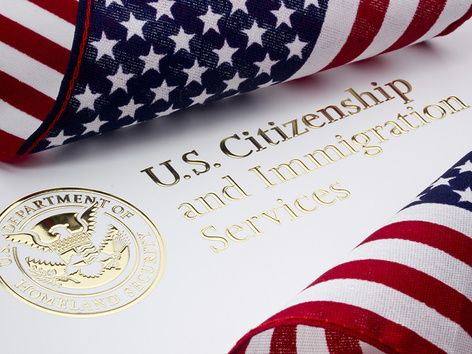Nonimmigrant visa to US: types of American non-immigrant visas and the procedure for obtaining a permit

If you are planning to visit the United States for a temporary stay, such as for tourism, study, business, or other purposes, you will need to obtain a nonimmigrant visa. Learn about the types of nonimmigrant visas available in the United States and the current permit application process in 2025.
The United States legal system defines a nonimmigrant visa as a temporary residence permit. Whether you plan to study, work, or explore America, understanding the U.S. visa application process is key to success. Read more about the types of nonimmigrant visas available in the U.S. and the procedure for applying for a permit in this article.
Types of Nonimmigrant Visas in the U.S.
List of visa types, as well as the purpose of visit for each of them:
1. Visitor Visas.
- B-1 Visa for temporary business visitors.
- B-2 Visa for tourists and visitors.
2. Transit and Membership Visas.
- BCC Visa – Border Crossing Card for Mexican citizens.
- C Visa – if you are stopping at a U.S. airport on your way to your destination.
- CW-1 Visa – for workers from the Commonwealth of the Northern Mariana Islands (CNMI) who do not qualify for other work visa categories.
- D Visa – for crew members who will work on a seagoing vessel or international airline in the United States of America and require a visa to be able to work domestically.
3. Trader and Investor Visas.
- E1 Trader Visa.
- E2 Treaty Investor Visa.
4. Student and Exchange Visas.
- F-1 Visa for international students.
- M-1 Visa for professional training.
- J Visa for exchange visitors.
- Q Visa for cultural exchange programs.
5. Temporary employment visas.
- H-1B Visa for highly skilled workers.
- H-1B1 Visa for citizens of Chile and Singapore.
- H-2A visa for agricultural workers from certain countries in which the United States has a specific interest.
- H-2B visa for temporary seasonal workers performing non-agricultural work.
- H-3 visa for non-degree training.
- I visa for foreign media representatives who want to work or participate in educational media events.
- E-3 visa for Australian citizens who will work in a specialty.
- L visa for in-house personnel.
- O visa for individuals with extraordinary abilities.
- P visa for athletes and entertainers.
- R visa for temporary religious workers.
- TN/TD visas for Canadian and Mexican citizens working in NAFTA.
6. Humanitarian visas.
- U visa for those who have been victims of certain criminal activities and can assist in the investigation or prosecution of those criminals.
- T Visa for victims of human trafficking who can assist in the investigation of crimes related to human trafficking.
- S Visa for witnesses or informants to assist law enforcement and provide information about a criminal organization in the United States.
7. Temporary Family Visas.
- V Visa for families who are in the process of waiting for the completion of the immigration process.
- K-1 Visa for the fiancé of a U.S. citizen.
- K-2 Visa for children of K-1 visa holders.
- K-3 Visa for the spouse of a U.S. citizen who is awaiting visa processing.
- K-4 Visa for children of K-3 visa holders.
8. Diplomatic and Official Visas.
- A Visa – for diplomats or foreign government officials traveling to the United States on official visits or representing their government.
- A-2 – for foreign military personnel who are going to serve or be stationed in the United States of America.
- NATO G1-G5 visas – for those who will work for NATO.
Steps to Apply for a Nonimmigrant Visa in the USA
Step 1 – Choose the Visa Type That Fits Your Needs
The first step in the US visa application process is to determine the type of visa that fits your purposes. Review the list and select the permit that matches your intended stay in the USA.
Contact a lawyer to learn about the available nonimmigrant visa options in the USA and choose the best option for your trip!
Step 2 – Fill out the DS-160 form
This is an online form where the applicant provides all the important information that may be needed during the nonimmigrant visa application process.
Important! Be careful when filling out the document, errors can lead to delays in issuing the permit.
Also upload a digital photo. After submitting the application, a confirmation page will appear, print it and carefully save it - this is your ticket to the next steps, including the visa appointment.
Step 3 – Pay the application fee
Pay the visa application processing fee. The amount of the fee depends on the type of visa you have, so check the embassy or consulate website for the latest information.
Payments are usually made online or at designated banks.
Step 4 – Schedule a visa interview
Make an appointment for your visa appointment at the nearest US embassy or consulate. Depending on your visa type, wait times may vary, so plan accordingly.
Step 5 – Prepare for your visa interview
Gather all required documents, including your passport, DS-160 visa application confirmation page, and your visa application fee receipt.
Depending on your visa type, you may also need proof of financial status, travel plans, or ties to your home country, etc.
Step 6 – Attend your visa interview
Arrive at the U.S. embassy or consulate on time with all of your documents in hand.
The officer will ask about the purpose of your trip, ties to your home country, and your ability to cover expenses. Answer truthfully and confidently.
Step 7 – Visa approval and entry
If your nonimmigrant visa is approved, your passport with the authorization will be returned by courier or other available means. Once you have your visa, double-check the details, including the type of visa and the dates. With your passport in hand, you are ready to travel to the United States of America.
To move, travel or work safely in a new country, you will need health insurance. You can apply for an extended policy on our website here.
Can a nonimmigrant visa in the United States be extended?
Before the expiration of your authorized stay in the United States, file an application for a visa extension with USCIS using Form I-539.
You will be eligible to apply for an extension of your stay if you meet the following requirements:
- You were lawfully admitted to the United States on a temporary visa.
- Your visa is still valid.
- You have not committed any crimes that would make you ineligible for a visa.
- You have not violated the conditions of entry.
- You have a passport that is valid for the entire period of your stay.
What happens if you stay in the United States after your nonimmigrant visa expires?
If your visa has expired but you have not left the United States, the consequences you face will depend on the number of days you overstayed:
- If you overstayed your visa by less than 180 days and then left without being forced to, you have the legal right to reapply for a U.S. visa.
- If you overstayed for more than 180 days, you face a three-year, ten-year, or permanent inadmissibility ban.
Applying for a nonimmigrant visa to the United States is completely possible, but the key is to start early to avoid delays and to review all forms thoroughly.
Keep all of your documents, such as your visa application, Form I-9, and payment receipts, organized and ready. Follow the photo guidelines carefully to avoid being denied. Finally, remain calm and confident during your visa appointment. These small steps can save you time and make the process much easier.
Remember! Getting a Green Card in the US can be quite difficult, especially for applicants from countries with high demand. We have already told you which methods of obtaining a residence permit in the US will be the best in 2025.
Igor Usyk - Head of Migration department at VisitWorld
To ensure a safe trip abroad, I advise you to contact a specialist. My colleagues, qualified specialists with legal education, will help you avoid unpleasant situations while traveling around the world.
Products from Visit World for a comfortable trip:
Checklist for obtaining a visa and necessary documents in the USA;
Legal advice on immigration to the USA;
Travel insurance for foreigners in the USA;
Medical insurance all over the world.
We monitor the accuracy and relevance of our information, so if you notice any errors or inconsistencies, please contact our hotline.
Frequantly
asked questions
How long can I stay in the US on a non-immigrant visa?
Is B1 B2 a non-immigrant visa?
Which visa in the US is easy to get?
Recommended articles
1 min
Residence permit
Starting January 17, 2025, the United States has implemented new H-1B visa rules aimed at improving fairness and reducing fraud. Find out what changes foreigners can expect this year and what is the procedure for obtaining an H1B visa
20 Jan. 2025
More details2 min
Expats
H-2B visa in USA: the US plans to issue 64,716 additional H-2B visas in 2025
The U.S. Department of Homeland Security (DHS) announced that it plans to issue 64,716 additional H-2B visas in fiscal year 2025. This decision is aimed at solving the problem of labor shortages, particularly in such a scarce industry as tourism. Find out in detail how the H-2B visa will be distributed in 2025 and what are the main requirements for applicants
09 Dec. 2024
More details2 min
Expats
Cost of living in the USA: expenses for housing rent, food, transport and monthly budget
Millions of people around the world dream of living in the US, but the country is notoriously expensive. That's why it's important to consider the potential costs and budget for a month before planning a move. Find out what budget an expat should have for living in the US in 2025
17 Dec. 2024
More details1 min
Popular
On the first day of his presidency, Donald Trump signed a series of orders aimed at changing immigration laws. Among the decisions is an order to cancel the right to US citizenship for children born to foreign parents, changes to obtaining an H-1B visa and much more. Find out what will change very soon for immigrants in the US
22 Jan. 2025
More detailsAll materials and articles are owned by VisitWorld.Today and are protected by international intellectual property regulations. When using materials, approval from VisitWorld.Today is required.
